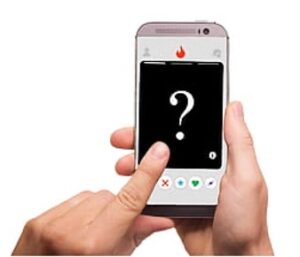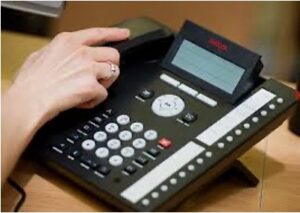If you are like most people, you’ve become numb to the overwhelming influx of spam and telemarketer robocalls coming to your smartphone . As a result, how often do you pick up an incoming phone call versus letting most calls go to voicemail? The inherent problem with call tracking software and dynamic Caller ID is that it isn’t always a good choice for your brand.
Like it or not, legitimate outbound sales calls are an integral sales tactic for many businesses. However, the act of making a phone call isn’t enough to reach someone in 2022 – there needs to be a strong strategy behind it. It’s more likely than ever before that the person you’re trying to reach will let your call go to voicemail without a second thought.
I’m certainly one of those people that often does not pickup an incoming phone call unless it is coming from a person in my contact list. The benefit is that instead of getting just the caller ID, that ID is converted to the name of the person associated with that number. 
I’m fortunate in that my phone number has a different area code than the one I live in. I automatically know that when I get an incoming call from the area code associated with my number, it’s more than likely to be an unwanted robocall.
Again, the real problem is what is called Dynamic Caller ID because it might not be in alignment with your brand.
What is Dynamic Caller ID?
Also known as Local Presence Dialing or Smart CallerID, this is an automated tactic that helps an organization with remote or virtual call centers to place calls that display a local phone number to the person being called.
Did you know that people are four times more likely to answer a local number?
The main reason businesses MUST consider using dynamic caller ID is to increase the probability for having their calls answered. Individuals are less likely to answer calls from “unknown” numbers or numbers they do not recognize.
Research on the impact of Caller ID has shown that this can be an effective tactic, as people tend to be more inclined to pick up a call when the Caller ID is coming from their state, city, or local area.
It is most often employed by outbound call centers that make calls to customers and prospects whether it be for sales, collections, surveys, research, fundraising, or proactive customer notifications.
It’s also important to note that dynamic caller ID & local presence dialing are NOT considered illegal number spoofing. They differ from one another in terms of legality & efficacy.
Number spoofing is not only illegal, but also ineffective. Spoofing involves tricking telecom and VOIP carriers by using phone numbers that are actually owned by another entity.
With dynamic caller ID, you are the legal owner of a given set of local phone numbers. So if a contact misses your call and tries to call back, they can make that call using the local number that appeared on their caller ID. On the other hand, consumers aren’t able to call back spoofed numbers.
The problem is that there is no way for the receiver of a call to know whether the number that appears on their phone is legitimate or spoofed.
It All Begins With Trust
For several decades, numerous organizations including the United Nations, Gallup and Edelman Communications have been researching “Trust.”
The primary conclusion among the top 10 findings in Edelman’s Annual Trust Barometer was that distrust is now society’s default emotion. Nearly 60% said their default tendency is to distrust individuals until evidence shows otherwise.
Because of this erosion of trust and competition for customers, the unfettered use of personal data is quickly coming to an end. In fact, zero-party data is becoming the new norm as more and more people seek privacy.
That is why, with the fast evolution of the internet and ecommerce, Trust is the new foundation for conducting business..
Caller ID is the first impression some consumers may have with your brand, and successful relationships are built upon trust.
Is Local Presence Dialing or Dynamic Caller ID Necessary?
It depends.
Local presence dialing, using dynamic caller ID, enables making calls from one place, but showing a number from the area that is being called. From a contact’s perspective, it looks like someone relatively nearby is calling even though the caller is no where close. So it certainly is a valid and viable tactic if a LOCAL business has virtual assistants placing outbound calls.
The polling firm, Gallup, saw a thirteen to twenty-four percent increase in call center productivity when they began incorporating this strategy, stating that the additional costs associated with changing these phone numbers was worthwhile and offset by increased productivity.
Research from the outbound call tracking software provider, Arbeit Software, demonstrated the benefits of local presence dialing with “75% of respondents stating that they’d be extremely unlikely to answer a call from an unfamiliar area code or 800 number.”
While this outbound calling tactic doesn’t ensure you’ll get those 75% on the phone, it does mean the likelihood of these consumers answering is higher.
Where it makes little sense is when the business is not a local business servicing local customers.
If a business and its clientele are not located in the same area code, what benefit is it to give the impression that your company is local?
Think about all the advertisers and businesses you may encounter on social media. If you happen to click on a link and you freely give up your phone number on a lead capture page, are you thinking that someone nearby is going to be calling you?
It’s often overlooked that outbound telemarketing is very much about building relationships. Whether this is B2B or B2C, trust must be established before a relationship can flourish. In order to have Trust, one must be able to build authentic rapport.
“When the trust account is high, communication is easy, instant, and effective.”
~ Stephen R. Covey ~
Rapport makes a prospect feel both comfortable and relaxed, and enables their unconscious mind to accept and process your messages and suggestions. That’s just the basics of human behavior.
For a business, lasting trust is the strongest insurance against competitive disruption, the antidote to consumer indifference, and the best path to continued growth. Without trust, credibility is lost and one’s reputation can be threatened.
“Whoever is careless with the truth in small matters cannot be trusted with important matters.”
~ Albert Einstein ~
Trust is ultimately the ticket to a brand or business’s transformative and sustainable future, and when you earn trust, your ability to influence the course of events becomes magical.
“The glue that holds all relationships together – including the relationship between the leader and the led – is trust,
and trust is based on integrity.”
~ Brian Tracy ~
Bottom line is that if there is no rational reason to use local presence dialing, why do it?
As previously mentioned, I’m fortunate in that my phone number’s area code is different from the one where I live, making it likely that incoming calls using local presence dialing are more than likely than not to be from unwanted callers.
Dynamic Caller ID Can Cause Irreparable Brand Damage
Branding is essential to your business identity.
Consumers prefer to do business with companies that have a good reputation, and just one misstep can spell disaster. Therefore, in order to acquire and retain customers it’s imperative for any business to build, enhance and maintain a good brand reputation.
One thing that many businesses overlook, however, is the power of phone number reputation on their branding.
For example, if I am dealing with a typical coaching and consulting business, the vast majority are small businesses with anything but a local clientele. So what value does it add to their reputation when they call a prospect using dynamic caller ID?
If the main company is located in Austin, TX, agents across the globe calling on their behalf and all can use Caller ID that shows that they are calling from Austin, TX whether they actually are or not. There’s nothing wrong with that because they are representing that company.
But all too often, that’s not what they do. Instead, they use local presence dialing.
It’s likely they’ve been sold on the premise suggesting they’ll get better connection rates, and they’ve given little thought to the implications on their brand.
The true result is that they are simply showing that they aren’t authentic.
If a company has the resources, another solution for outbound calling is Branded or Business Caller ID where the caller ID displays a caller’s company name, location, logo, and other identifiable information before the call even starts.
“90% of consumers say they are more likely to answer a call if they can be certain of who’s calling.”
It’s not that expensive, although it does require a business phone line (land-based or VOIP) and you can’t use just a personal cell phone. Some plans (not including the cost of the business phone) start at $50/month while dynamic caller ID plans are considerably more expensive.
Unless the circumstances dictate otherwise, the best solution for remote outbound call teams is having everyone connected via an internet-based VOIP system and using branded caller ID rather than dynamic caller ID.
The only business that should consider dynamic or local presence are ones that can authentically benefit from being viewed as a local business.
Now that you’ve heard my thoughts, what are your thoughts on the use of Dynamic Caller ID?
- How A Traditional T-E-A Ceremony Translates to Ranking High on Google - April 25, 2023
- On-page SEO is Necessary if You Want Traffic - September 15, 2022
- Off-Page SEO is Essential for MegaFluence - September 10, 2022


